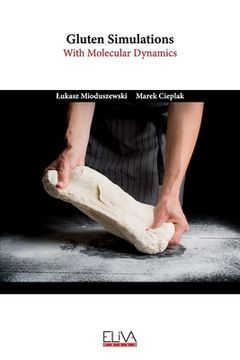Compartir
Gluten Simulations: With Molecular Dynamics (en Inglés)
Marek Cieplak
(Autor)
·
Lukasz Mioduszewski
(Autor)
·
Eliva Press
· Tapa Blanda
Gluten Simulations: With Molecular Dynamics (en Inglés) - Cieplak, Marek ; Mioduszewski, Lukasz
$ 71.380
$ 99.140
Ahorras: $ 27.760
Elige la lista en la que quieres agregar tu producto o crea una nueva lista
✓ Producto agregado correctamente a la lista de deseos.
Ir a Mis Listas
Origen: Estados Unidos
(Costos de importación incluídos en el precio)
Se enviará desde nuestra bodega entre el
Lunes 05 de Agosto y el
Jueves 15 de Agosto.
Lo recibirás en cualquier lugar de Chile entre 1 y 3 días hábiles luego del envío.
Reseña del libro "Gluten Simulations: With Molecular Dynamics (en Inglés)"
Gluten consists principally of intrinsincally disordered storage proteins (glutenins and gliadins) from wheat grains. During the breadmaking process these proteins form a network that is responsible for the extraordinary viscoelasticity of wheat dough that determine the quality of bread. This book sums up the pioneering simulations of gluten proteins, aimed for recreating their unique viscoelastic properties. The computer simulations use the Dynamic Structure Based model, which enables molecular dynamics of thousands of amino acids. The corresponding time-dependent properties are studied through shear and axial deformations of the simulation box. The two types of deformation turn out to have a different impact on the proteins. Glutenins are shown to influence the mechanics of gluten much more than gliadins. The measured quantities include the response force to the deformation, the number of entanglements and cavities, the mobility of residues, the number of the inter-chain bonds, etc. The dynamic shear modulus and critical strain are also calculated. The results are consistent with the existing ideas about gluten elasticity, e.g. the slip-bond theory which assumes that the gluten proteins can be treated as an interconnected network of polymers. The simulations emphasize the role of entanglements and hydrogen bonding. Five different systems are simulated: in addition to gliadins, glutenins and gluten (a mixture of both), storage proteins from maize and rice are also considered. The last two constitute a control group, that (according to expectations) has weaker elasticity. This validates the methodology used in this approach.
- 0% (0)
- 0% (0)
- 0% (0)
- 0% (0)
- 0% (0)
Todos los libros de nuestro catálogo son Originales.
El libro está escrito en Inglés.
La encuadernación de esta edición es Tapa Blanda.
✓ Producto agregado correctamente al carro, Ir a Pagar.

